A Dance of Lights: Awed by the Aurora Borealis
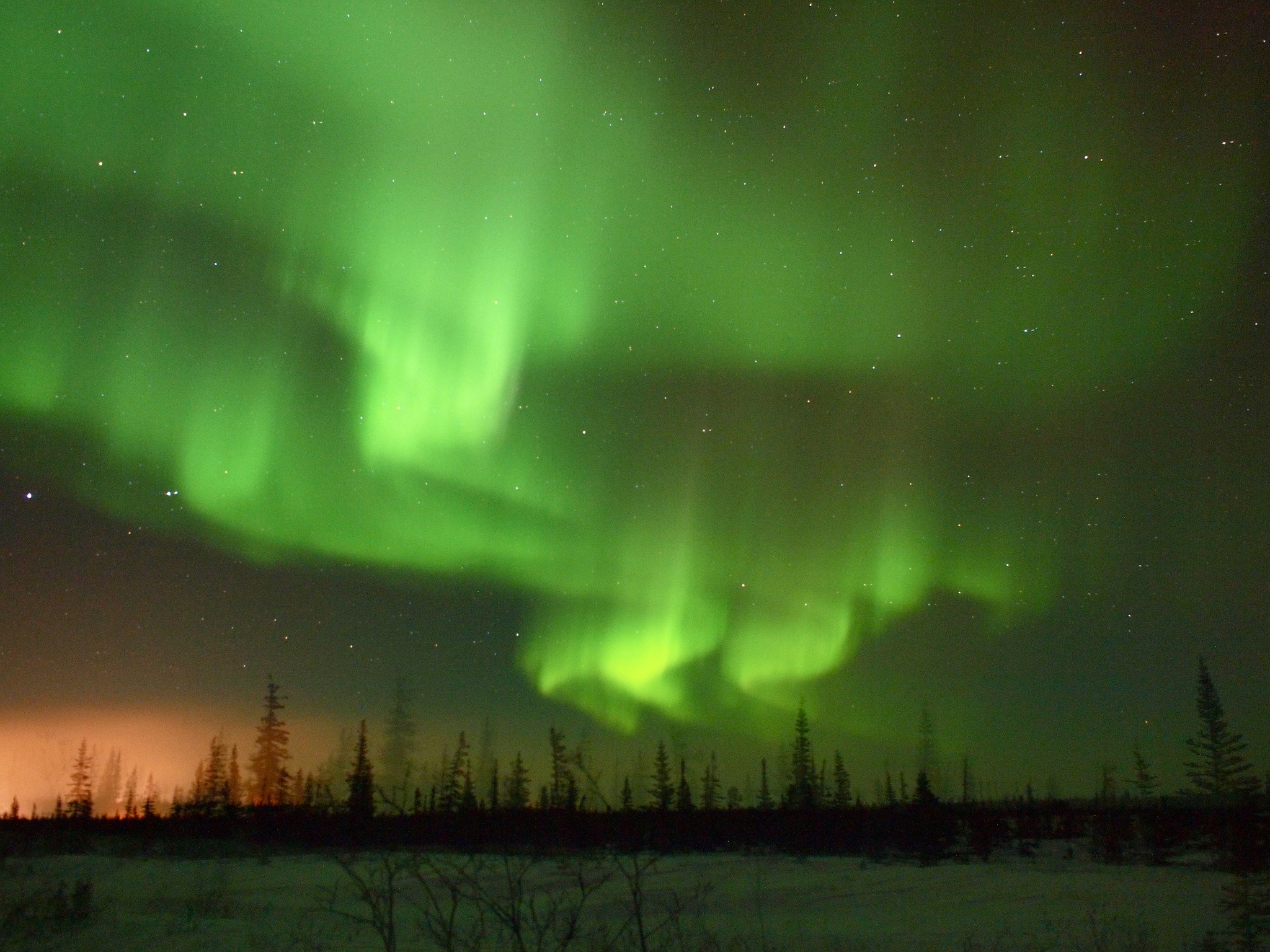
“The sight filled the northern sky; the immensity of it was scarcely conceivable. As if from Heaven itself, great curtains of delicate light hung and trembled. Pale green and rose-pink, and as transparent as the most fragile fabric, and at the bottom edge a profound and fiery crimson like the fires of Hell, they swung and shimmered loosely with more grace than the most skillful dancer. Lyra thought she could even hear them: a vast distant whispering swish. In the evanescent delicacy she felt something as profound as she’d felt close to the bear. She was moved by it; it was so beautiful it was almost holy; she felt tears prick her eyes, and the tears splintered the light even further into prismatic rainbows.” (– Philip Pullman, The Golden Compass)
I can still remember the first time I read the above passage. I was 15 and in ninth grade; not yet bitten by the travel bug, but nevertheless inexplicably drawn to the ethereal image of the Northern Lights flickering over the Arctic that Philip Pullman painted so vividly in his “Dark Materials” fantasy trilogy.
The story of Lyra Balacqua and her quest to discover “Dust” is not one known to many outside the realm of fantasy fans. But the Aurora borealis that Pullman (through Lyra) waxed on so poetically about? Yeah, just about everybody has heard of that.
In Pullman's fantastical world, the Northern Lights serve as a gateway into an alternate universe. In reality, the dancing green and purple lights are caused by charged particles given off by the sun during solar storms interacting with the gases in earth's atmosphere. … (Yeah, the gateway into an alternate universe sounds better to me, too.)
Up until about 50 or 60 years ago, though, very little was known about the aurora and what caused it. Some explained the glow in the sky as light reflecting off the ice caps, due to the location of the Lights. Nevermind the fact that the polar regions get little to no sunlight in the winter months… It wasn't until Canada began launching Black Brandt rockets from Churchill to study the sky in the 1960s that scientists began to understand just what causes the Northern Lights to appear.
Personally, I like a lot of the old myths better than the real explanation, though.
The earliest recorded sighting of the Northern Lights can be found in ancient Chinese literature, and countless native populations came up with their own explanations and beliefs about the Lights long before scientists and astronomers ever got involved.
Some of my favorite aurora-related myths include:
- The Norse used to believe the Lights to be reflections off the shields of the Valkyries, who led dead soldiers to the afterlife.
- In Southern Europe, the Northern Lights were feared and believed to be a sign that war was coming since they are so rarely seen so far south.
- The Alaskan Inuits, too, viewed the aurora as dangerous, and would wave sharp knives and throw dog poo at the Lights to make them go away.
- In Iceland, it was believed that a pregnant women who looked that the Lights would give birth to a cross-eyed baby.
- Conversely, in Japan and China, the Northern Lights were seen as a sign of fertility, and a baby conceived beneath them would have good fortune in life.
- In Scandinavia, the lights were also good luck — the display in the sky was believed to be caused by light reflecting off herring in the sea, meaning good fishing was to be had.
- Similarly, farmers in Sweden saw the Lights as a promise of a rich harvest.
Believe it or not, there there are even references to the celestial lights in the book of Ezekial in the Old Testament.
It's no wonder, then, that seeing the Northern Lights was on my bucket list before I even HAD a bucket list.
Flashback to last week, as I'm sitting in a tricked-out Tundra Buggy (think a monster truck crossed with an RV) in Churchill, Manitoba, wearing roughly 17 layers of warm clothing and preparing to go chasing the Northern Lights for the first time in northern Canada.
This was not my first time to the rodeo, though, and so my hopes were decidedly not up. I had once before attempted to travel to a destination within the famed auroral oval — only to be met by completely cloudy skies for 5 days straight. While I was aware that Churchill is purportedly one of the top 3 places on earth to spot the Northern Lights (with anywhere between 250 and 300 days per year when the Lights are active), I did not have full confidence in the weather to cooperate.
I've learned from frequent travel that no expectations are often the best kind to have.
I was prepared, of course — camera equipment and cold weather gear at the ready — but not entirely optimistic about catching the aurora in action. After all, conditions have to be just right — clear, dark skies; crisp weather; and of course some sun particles bumping into gases in the atmosphere are all necessary. And, even then, sometimes you miss them.
But I needn't have worried. Churchill delivered.
We weren't even at our viewing spot 5 kms from the town of Churchill yet when someone pointed out the Tundra Buggy window to a sliver of green in the sky overhead. I kept my eye on this first glimmer of the Lights for the next half hour as we bounced and bumped over ice hummocks on the frozen Churchill River, praying that it wouldn't disappear.
It did not. In fact, the Lights only got brighter and more active as the next few hours passed, prompting all of us to brave temperatures of -29 C (-20 F) to attempt to capture the phenomenon on camera. Frequent squeals could be heard as even seasoned photographers successfully snapped their first shots of the sky streaked with green.
By the time a couple of hours had passed, the Lights were arcing over our heads, reaching from one horizon to the other in an undulating stream of green that moved and shifted like a living river in the sky. I could not stop smiling, and it was only the extreme cold that kept a few tears at bay.
Just before we packed it in for the night around 1:30 a.m., the aurora began “dancing” above our heads — a brilliant finale of cascading, leaping, shimmering light in all shades of greens and purples that lasted a few breathless minutes before dying out completely. Impossible to capture on film, but also impossible to ever forget.
We were thwarted by bad weather (an impending blizzard, in fact) on our second night in Churchill. This meant no Tundra Buggy ride out over the river, and no Lights. But we weren't upset about it; we knew we would have one more chance.
Our third and final full day in Churchill dawned overcast, windy, and frigid — so windy and frigid, in fact, that a few people in our group exhibited early signs of frostbite on their exposed faces after being outside for just 10 minutes. By the afternoon, our prospects of glimpsing the aurora for a second time seemed slim.
But the Universe was apparently on our side, because by that night the skies had cleared, the wind was more manageable, and the aurora forecast actually looked decent.
We decided to go for it.
Taking the Tundra Buggy out on the river was deemed too risky, so instead we piled into two Frontiers North vans and headed to a different spot outside the city. It was bitterly cold (-45 C with windchill), and again I was not optimistic. Even if we DID find the Lights, would any of us be able to withstand the cold long enough to even take a 30-second exposure?
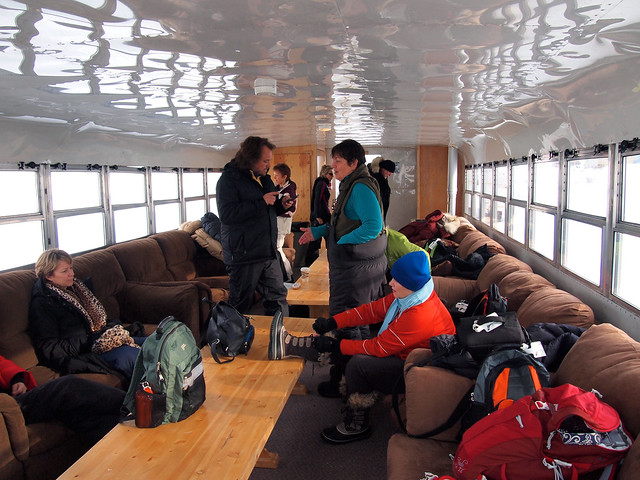
We saw no Lights for the first half hour, and simply sat in the dark vans, watching and waiting. There's an old legend that says that whistling or singing will tease the Lights into appearing, so me and another passenger started singing “This Little Light of Mine,” as much to pass the time as anything.
But, lo and behold, not 10 minutes later there they were — the Lights were back for a second show. Perhaps not entirely a legend after all…
This second night of Lights hit home for me how amazing this natural phenomenon truly is. The Lights on this night were more curtain-like than on the first, and much more colorful. Even though it's true that you can capture more color in an aurora photo than you can see with your naked eyes, we could clearly see the hints of reds and purples on this night, along with the more common green.
Despite my frozen eyebrows and the fact that I seriously thought I might lose a finger or two on this night, being able to see the aurora shimmer and fall through the sky for a second time was just as awe-inspiring as the first.
Once the aurora began to die down in the sky and only 4 of us remained to brave the weather, we headed back into town.
But I wasn't ready for the show to be over yet.
I packed up my camera, re-bundled up, and headed out to the inuksuk (a stone statue) a couple of blocks from our hotel. As I walked, the Lights came back out right above my head — so bright that they could be clearly seen above the lights of Churchill.
My camera battery only lasted for a handful of shots (it was simply too cold for it to keep working), but I didn't regret going back out at all. I was well aware of how lucky I was to be experiencing the Lights, and also aware that this could be my last chance to do so for a long time.
The whole purpose of my trip to Churchill was to learn more about the Northern Lights and try to photograph them. I'd say I was definitely successful on both counts.
And so I'll end this post with some fun facts about the Northern Lights that you might not know:
- After major solar storms, the Lights have been seen as far south as Miami, Florida and Athens, Greece.
- After said solar storms, the charged particles that cause the aurora take 2-4 days to reach Earth.
- Auroral ovals exist over both of Earth's poles, and are thought to mirror each other. Meaning when the Northern Lights are active, so are the Southern Lights.
- The Northern Lights are called the aurora borealis, while the Southern Lights are called the aurora australis.
- Earth isn't the only planet that the Northern Lights appear on — there are even auroral ovals on Saturn!
- The Lights can be active at any time of year, but usually aren't seen during the summer months because the skies simply aren't dark enough.
- The variations in color of the Lights are due to the types of gases the sun particles are colliding with, and at what altitude. The Lights can occur anywhere between 40 and 600 miles above the earth's surface. The more common green color is caused when particles encounter oxygen about 60 miles above the earth. Red is caused by oxygen, too, but at much higher altitudes. Nitrogen produces blue and purple tinges in the aurora.
- The shapes the Northern Lights make in the sky are determined by fluctuations in the earth's magnetic field.
- The Lights are usually most active after midnight.
After nearly 2,000 words gushing about this experience, I'm sure I don't need to tell you that if you ever have the chance to see the aurora, TAKE IT. But I'll say it anyway. Out of all my travel experiences so far, this one definitely stands out for me as one of my most memorable.
Is seeing the Northern Lights on YOUR bucket list?
(And, for those of you who'd like to capture images like these for yourself, check out my post on How to Photograph the Northern Lights.)
*Note: I was a guest of Travel Manitoba and Frontiers North Adventures on this trip. But, as always, all opinions are my own. (And yes, there are ALL photos that I personally took on this trip!)

Amanda Williams is the award-winning blogger behind A Dangerous Business Travel Blog. She has traveled to more than 60 countries on 6 continents from her home base in Ohio, specializing in experiential and thoughtful travel through the US, Europe, and rest of the world. Amanda only shares tips based on her personal experiences and places she's actually traveled!


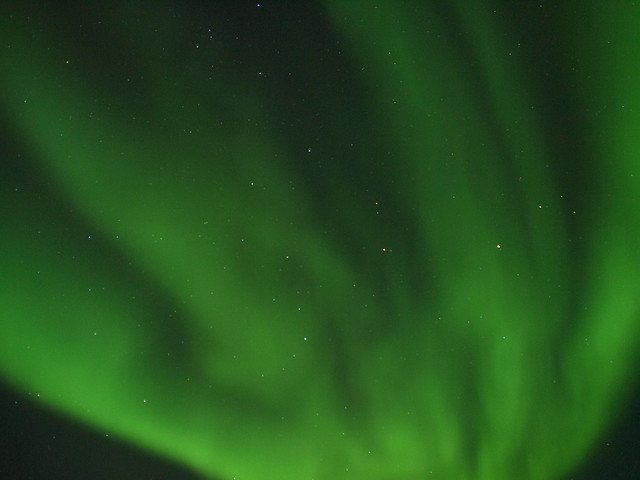
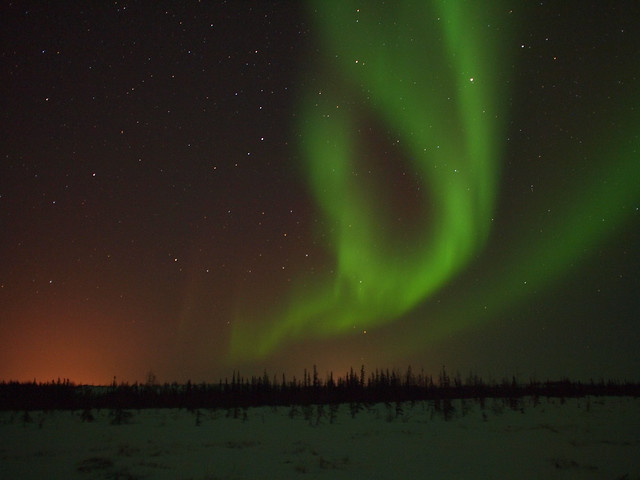

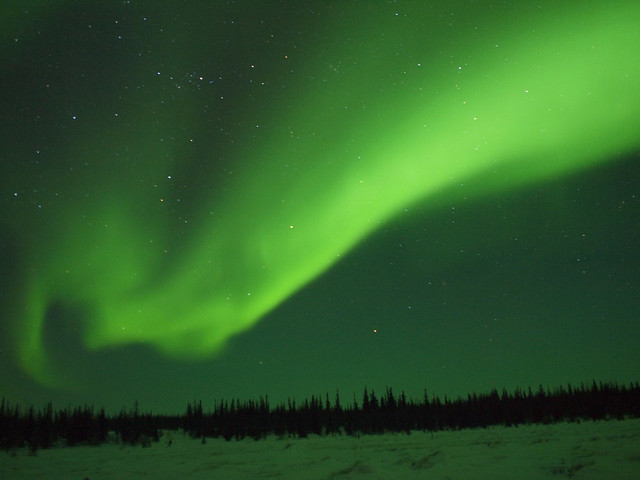
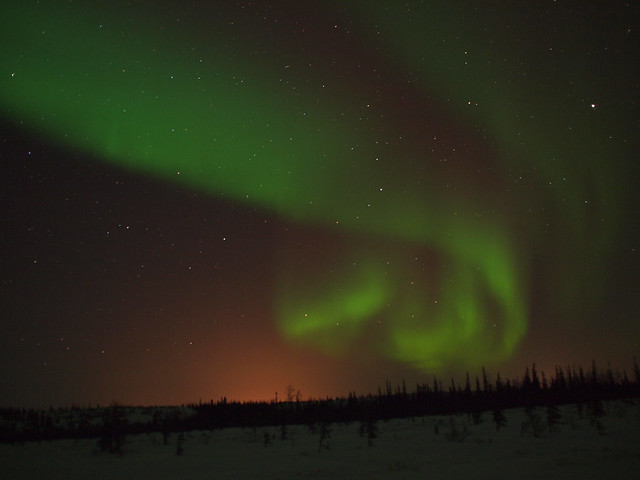

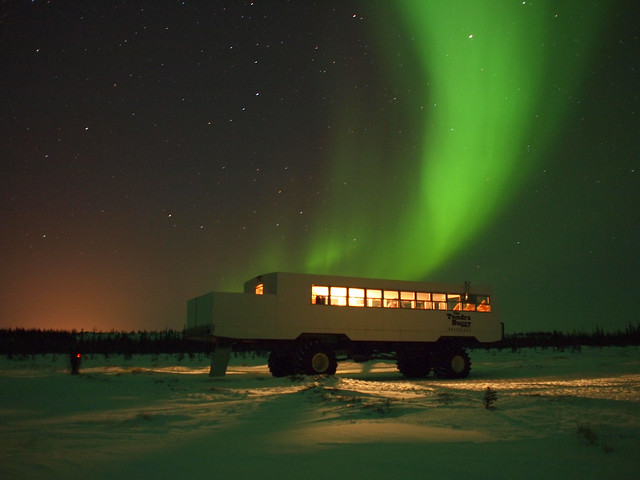
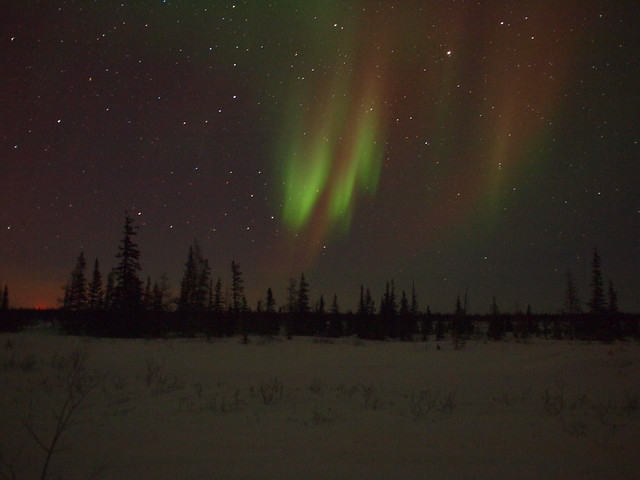
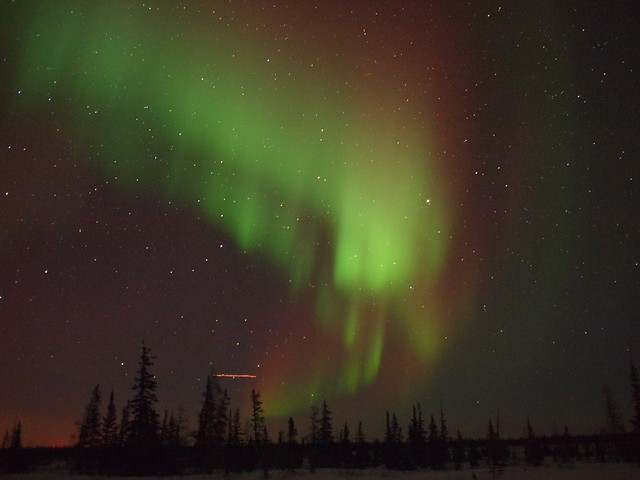
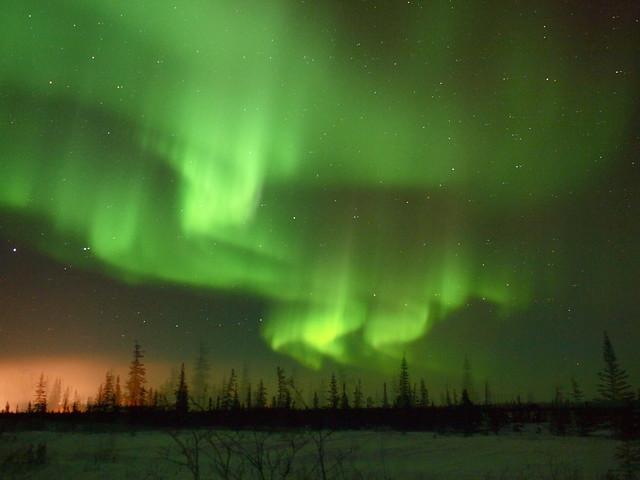
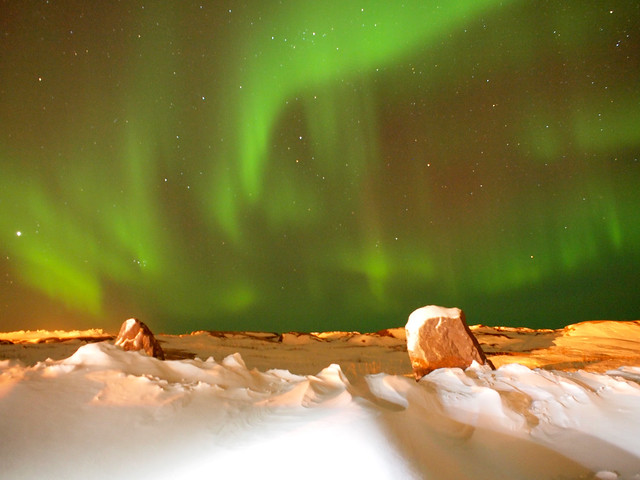
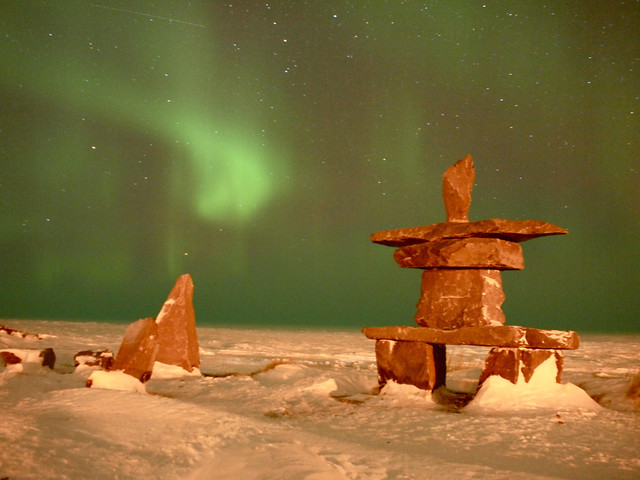
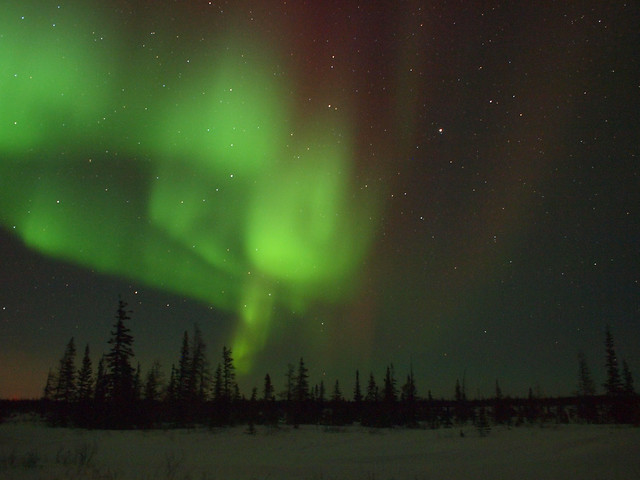









Wow!! The northern lights have been on my bucket list for soooo long but I’m useless in the cold at the best of times and am known within my circle of friends for jinxing the weather (rode a camel through the Sahara and it poured with rain!) so I’m worried I’d spend a lot of money travelling a long way to see them and be bitterly disappointed. Can’t believe you got to see them twice in the same place, that’s so incredibly lucky! Loving the photos too, especially the one with the little stone structure in the foreground. Beautiful 🙂
The weather IS definitely a concern when it comes to seeing the Lights. This was actually my second try – I went to Iceland in 2012 to try and see them, and was met with 5 days of clouds. Oh well. I hope you get to see them someday! Just be sure to bundle up. 😉
[…] Absolutely amazing pictures of the Northern Lights. Bonus points if you can spot one of our fav gents, Stay Adventurous, in these photos! A Dance of Lights: Awed by the Aurora Borealis […]
Oh my word, those photos are fantastic.
It must have sent tingles down your spine? It would have done for me.
Definitely lots of spine tingling! It was so amazing.
Your photos are incredible. Just to be on the safe side, if I ever get to see them, I’m going to throw dog poo at them too…
Thanks! And hahaha… good luck with the dog poo!
“seeing the Northern Lights was on my bucket list before I even HAD a bucket list” — me too!! I have yet to get there but it’s one of top two things I’ve always wanted to do (the other being spending New Year’s in Sydney)! Love love love the photos!
Ooo New Year’s in Sydney is also on my list! I hope you get to cross both things off yours!
Thanks for this post – I could feel your excitement as I read through it. I hope to see the Aurora one day too…
I hope you get to see them one day, too, Rachel.
Amanda, I really felt the excitement and energy in this post as I read word for word! This is SO amazing and wish to see it with my own eyes soon. You guys definitely lucked out!
Wow!! You have captured some really beautiful shots. Seeing the Aurora is number 1 on my bucket list and this post has just reaffirmed that. Great facts too 🙂
If you have have the chance to see it, take it! Such an amazing thing to witness.
YES! Omg, what a spectacular show. I love the picture with the buggy. Can’t wait to see this some day.
“Spectacular” is a great word to use – it definitely was!
I’m going to show my Aussie-ness here but all I can say is “bloody amazing”.
I was already keen to work in Churchill for a few months next year and this just sealed it! Great post and great pictures.
Awesome! Where/when are you planning to work in Churchill? That would be fun I think – nearly every season offers up something really unique to see or do there!
I remember my Grandpa telling me about the lights as a child. He said they were the souls of all the people who were up in heaven looking down on earth through the clouds. You’ve taken some brilliant photos the green is so vivid against the inky black of the night sky. We’re hoping to see the lights at some point, perhaps when we’ve invested in some snow boats and a snugly warm coat! Until then I’m content with your photographs!
Aww, what a nice explanation of the Lights from your grandpa. 🙂
And yes, snow boots and snuggly warm coats definitely recommended for this adventure!
Great photos Amanda! And yes it is indeed worth facing the freezing cold to see them, especially when they are that impressive!
Agreed, Jarmo! I would gladly freeze my butt off a few more times to see them like that again. What an incredible show!
Wow wow wow! Amazing! I love that you quoted Phillip Pullman, and those facts about what ancient peoples believed the lights to be is both fascinating and hilarious! Was taking those pictures very difficult, I mean technically? Did you need to use a tripod?
So awesome to see so many Pullman fans read my blog. 🙂
And yes, photographing the Lights is definitely tricky! You needed a tripod and a camera with manual settings to really get good shots. It took me a while to get things right!
Amanda these photos are beautiful. I heard that 2013 is supposed to be a good year for the Aurora Borealis, so I’m excited you got a chance to see them. Sometimes I’m lucky enough to see them, very faintly, where I live, but I’d love to take a trip further north, like in Churchill, where they’re a bit clearer.
Yes, 2012-2014 is supposed to be prime aurora viewing for this sun cycle. I was determined to see them during that time span, and am ecstatic that I finally did!
WOW! Those are some stellar photos. The Aurora looks so amazing and has always been at the top of my bucket list to experience. And that buggy is badass! Looks like a marvelous way to cruise around with the couches and all. Btw, I LOVE how you included the different cultures around the world and what they thought of the Aurora. Always great research Amanda, thanks!
Thanks, Ryan! The tricked-out Tundra Buggy was AWESOME, and so much fun to travel around in.
I love learning stuff about myths and legends and such, so that part of my Northern Lights education was super interesting to me!